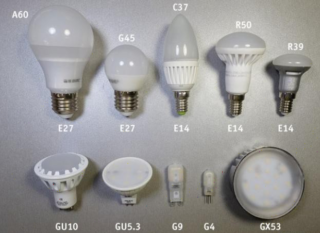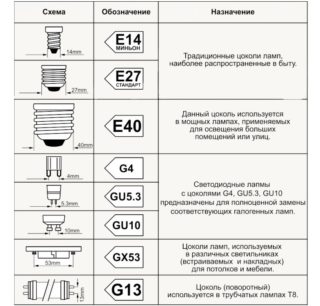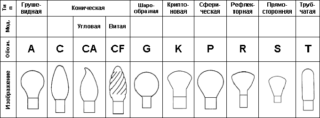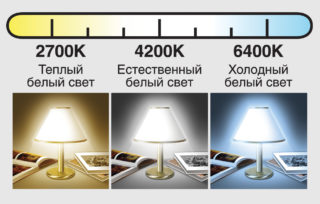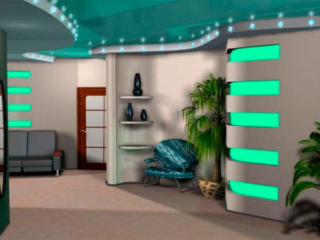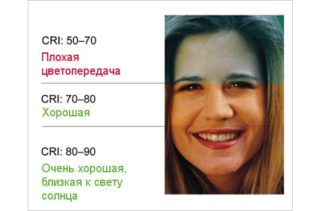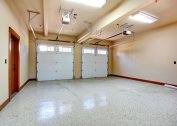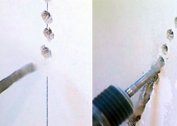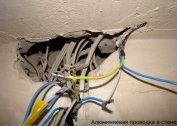Technologies do not stand still, their development has also affected the issues of lighting of premises, territories and objects. A breakthrough in this direction was the invention and implementation of energy-saving LED lamps. These products are at the peak of popularity, gradually, but confidently displacing analogues. In favor of the choice of LED lamps for the home are the numerous advantages of products that have proven themselves in all operating conditions.
Advantages and disadvantages of LED lamps
An LED lamp is a complex electrical device consisting of a housing, a bulb, a rectifier, luminous diode crystals and a circuit that stabilizes the current parameters.
LED lamps have the following advantages:
- Profitability. Energy consumption at the same brightness is 8 times less than that of analogues with an incandescent filament; 1.5 times than that of fluorescent lamps.
- Optimal emission spectrum. It is closest to the natural, therefore comfortable for sight.
- Safety. Products do not contain harmful substances. The case is made of polymer plastic, which does not pose a threat to the environment.
- Durability. A high-quality LED lamp is designed for 8000-10000 hours of operation. The resource of the device is 5-10 years.
- Possibility of modification. LED bulbs can be dimmed, their refinement is available even to novice masters, products must be repaired at home.
The LED lamp maintains the same brightness at high and low mains voltage thanks to the built-in stabilizer.
LEDs also have disadvantages, you need to reckon with them, making a choice in favor of this product.
- High price. It is comparable to fluorescent products, but 10-12 times higher than that of devices with incandescent filaments.
- The brightness adjustment function is supported only by expensive models issued by the manufacturer.
- The presence on the market of a large number of low-quality products. Such LED bulbs give out an uncomfortable glow for the eyes and blink.
Products should be protected from direct sunlight, since plastic is destroyed under the influence of ultraviolet radiation.
Types of fixtures
The optimal type of construction and high performance ensured the use of lamps in all fields of activity.
According to their purpose, they are divided into the following categories:
- Household. They are used in residential and utility rooms, offices and in the housing sector. Small lamps play the role of backlighting, and devices of a standard size - the task of creating the main lighting.
- Street Designed to highlight objects, sidewalks, buildings and roads. Devices with a high degree of protection against dust and moisture are used.
- Smart. They are distinguished by the presence of a relay that adjusts the brightness of the crystals depending on the intensity of external lighting. Installed in night lights and street lights.
- Interchangeable. They have a collapsible design, which provides for plug-in mounting of parts. The choice in favor of such devices can mean a lot in terms of economy, since replacing one fragment is much cheaper than the whole device.
By their design, the luminaires create directional, diffused and linear light. Thanks to this diversity, the new generation of lamps has become widespread.
The difference between LED lamps and others
In order to successfully adapt the LED devices successfully and without fundamental changes in the design of the luminaires, engineers gave them the standard shape of the housing and base.Thanks to the compact design of the internal parts, this did not cause any difficulty. In their configuration, LED devices practically do not differ from previously developed products. The decoding of the marking of LED luminaires is carried out according to uniform world standards.
Power:
- street - 15-25 W;
- ceiling for a chandelier - 6-15 W;
- point (built-in and external) - 1-5 watts.
Base:
- E27, E14 - screw 27 mm and 14 mm;
- GU10 - 10 mm two-pin connector with bulges;
- GU5.3 - 5.3 mm two-pin connector;
- G13 - 13 mm two-pin connector in tube lamps.
The form:
- A55 - a pear;
- C35 - candle;
- G45 - ball;
- R39, R50, R63 - reflectors with reflectors.
Colour temperature :
- 2700-3200 K - warm white;
- 3500-4500 K - daily;
- 4700-6000 K - white;
- from 6000 K - cold white.
The differences are as follows:
- The device does not include glass and chemicals.
- The stabilizer maintains the current within the specified limits.
- The flask is made of matte or clear plastic.
- Flat smoothing capacitor saves energy.
The rating of leading manufacturers indicates that LED lamps look great against the background of outdated lamps.
How to choose LED bulbs
To choose the right LED bulbs for the home, you need to consider a number of criteria that will affect the efficiency of their operation.
The following factors should be evaluated:
- Purpose and place of use. For the equipment of large rooms, large lamps of 6-10 W are suitable, depending on the number of horns. You can supplement them with LED lamps for spotlights 220 V brand R39, R50, R63
- Cold or warm light. Here you must give preference based on your priorities. Warm radiation creates a feeling of comfort, while cold radiation provides better lighting.
- Light output. A good source has an index between 80-89 Ra, providing natural illumination of objects and objects.
It is necessary to take into account the directivity of the radiation. Bulbs with a diffusing effect are suitable for ceiling lights. It is better to equip the backlight with sources of a searchlight type. For illuminating a kitchen worktop or mirror, longitudinal products in the form of a pipe are an ideal solution.
Lighting level selection
 A big plus of LED lights is that they, unlike incandescent lamps, are available in a wide range of different technical characteristics. Selecting models according to certain parameters, you can make an original composition that will shine exactly as the owner of the property intended. The basis for the calculation is the optimum lighting level of 25 W / m² for an incandescent lamp. As for LED devices, this indicator decreases by 8 times to 3 W / h.
A big plus of LED lights is that they, unlike incandescent lamps, are available in a wide range of different technical characteristics. Selecting models according to certain parameters, you can make an original composition that will shine exactly as the owner of the property intended. The basis for the calculation is the optimum lighting level of 25 W / m² for an incandescent lamp. As for LED devices, this indicator decreases by 8 times to 3 W / h.
Example: A hall that has a total area of 20 m². The required power is 60 watts of LEDs. For a chandelier of 4 horns, 12-15 W lamps are required, which is equivalent to 4 analogs with incandescent threads of 125 W each.
Selection by technical parameters
Each product has certain technical characteristics that are applied on its body and packaging. These data need to be carefully studied in order to buy a functional and effective thing.
The selection criteria for LED devices are as follows:
- power - it is selected with a small margin relative to the calculated data, since over time the crystals lose their brightness;
- ripple - the coefficient should be in the range of 10-40%;
- color rendering index - at least 80 for residential premises and 70 for utility rooms;
- Lighting angle - limited by a given area, but not more than 50 ° when mounted on the ceiling;
- dimming support - if a regulator is installed in the room;
- correct operation with the indicator on the wall switch.
When buying, you should pay attention to the availability of a quality certificate and the integrity of the goods. In all cases, it is necessary to check it and claim a guarantee.For such products, it is given for at least 2 years.
How much can you save when using LED lamps
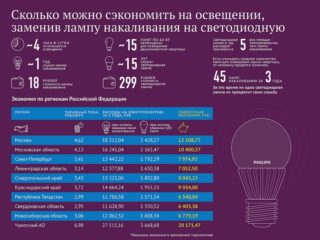 Using the example of a two-room apartment, an approximate calculation of potential savings when using LED devices can be carried out. On average, 20 incandescent lamps of 100 W each are installed in all rooms. For a day of work, they consume up to 5 kW when turned on alternately. 150 kW per month. On products with crystals will take a maximum of 20 watts. The savings on electricity will be 120 kW or about 500 rubles per month, and for the year - 6000 rubles.
Using the example of a two-room apartment, an approximate calculation of potential savings when using LED devices can be carried out. On average, 20 incandescent lamps of 100 W each are installed in all rooms. For a day of work, they consume up to 5 kW when turned on alternately. 150 kW per month. On products with crystals will take a maximum of 20 watts. The savings on electricity will be 120 kW or about 500 rubles per month, and for the year - 6000 rubles.
Since the ICE devices are designed for several years of operation, 2 years should be taken into account - the warranty period during which the product is subject to replacement. With an average cost of 200 rubles, 4000 rubles will be spent on the purchase. Incandescent lamps will cost 500-600 rubles, but they will have to be replaced more often - every 3-4 months, which in 2 years will result in the amount of 3000-3500 rubles.
Given the consumption of electricity and the replacement of burnt products, the payback of LED lamps will come in 4 months, and then there will be net savings.
